New stadium: Ahmad bin Ali Stadium, the desert dune
source: StadiumDB.com [TS]; author: Tomasz
 A week from now it will be the star of FIFA’s Club World Cup, so high time we added the new stadium in Al Rayyan to StadiumDB.com! It’s worth the look, especially when lit up at night.
A week from now it will be the star of FIFA’s Club World Cup, so high time we added the new stadium in Al Rayyan to StadiumDB.com! It’s worth the look, especially when lit up at night.
Advertisement
Back in mid-December it wasn’t even clear how it’s going to be named. The grand reveal was scheduled for the Dec 18 inauguration. And it turns out the interim name of Al Rayyan Stadium didn’t hold but no new name was coming as well. Instead, the Qataris turned to tradition, going back to Ahmad bin Ali Stadium, the name used by local stadium before it was demolished in 2014-15.
We know the name, now it’s time to learn more about the fourth 2022 World Cup venue opened. After all, next week it will be the key venue during the Club World Cup and in next year it’s going to host 7 games of the world’s best national teams.
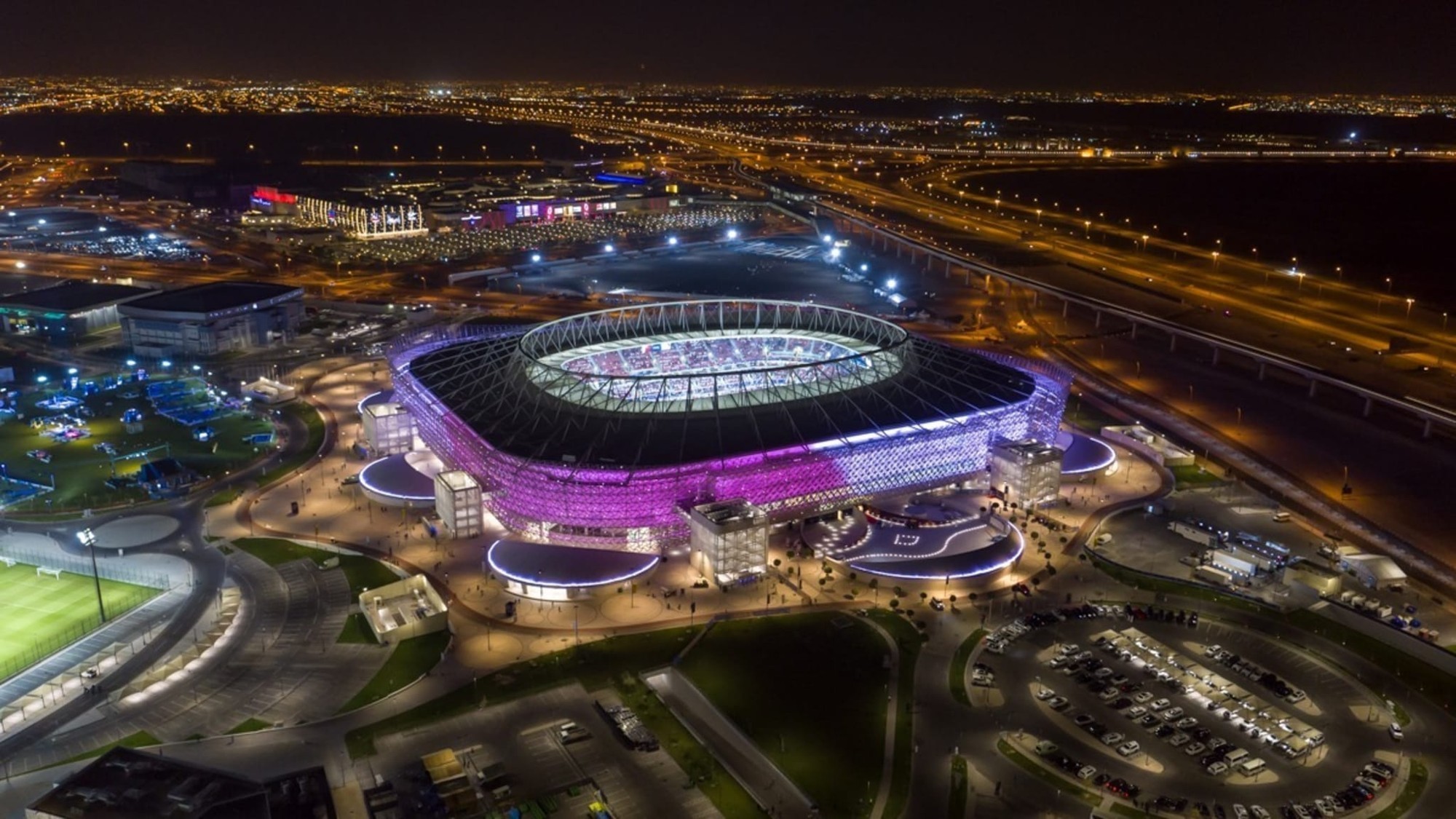 © Supreme Committee for Delivery and Legacy
© Supreme Committee for Delivery and Legacy
Ahmad bin Ali Stadium stands, quite literally, on the ruins of its predecessor, because the rubble was almost entirely reused as part of the new structure. Located in western outskirts of Doha, nowadays almost within the city proper, the stadium stands just over 800 metres away from the next venue, Education City Stadium.
The design, created at Pattern Design, is based on the desert dune inspiration and was presented in April 2015. Originally, the Al-Rayyan Stadium was scheduled to be commissioned in March 2019. Later, however, the completion date was postponed several times. Finally, the investment was completed at the end of 2020, and on December 18th, the first match was played on Qatar's National Day.
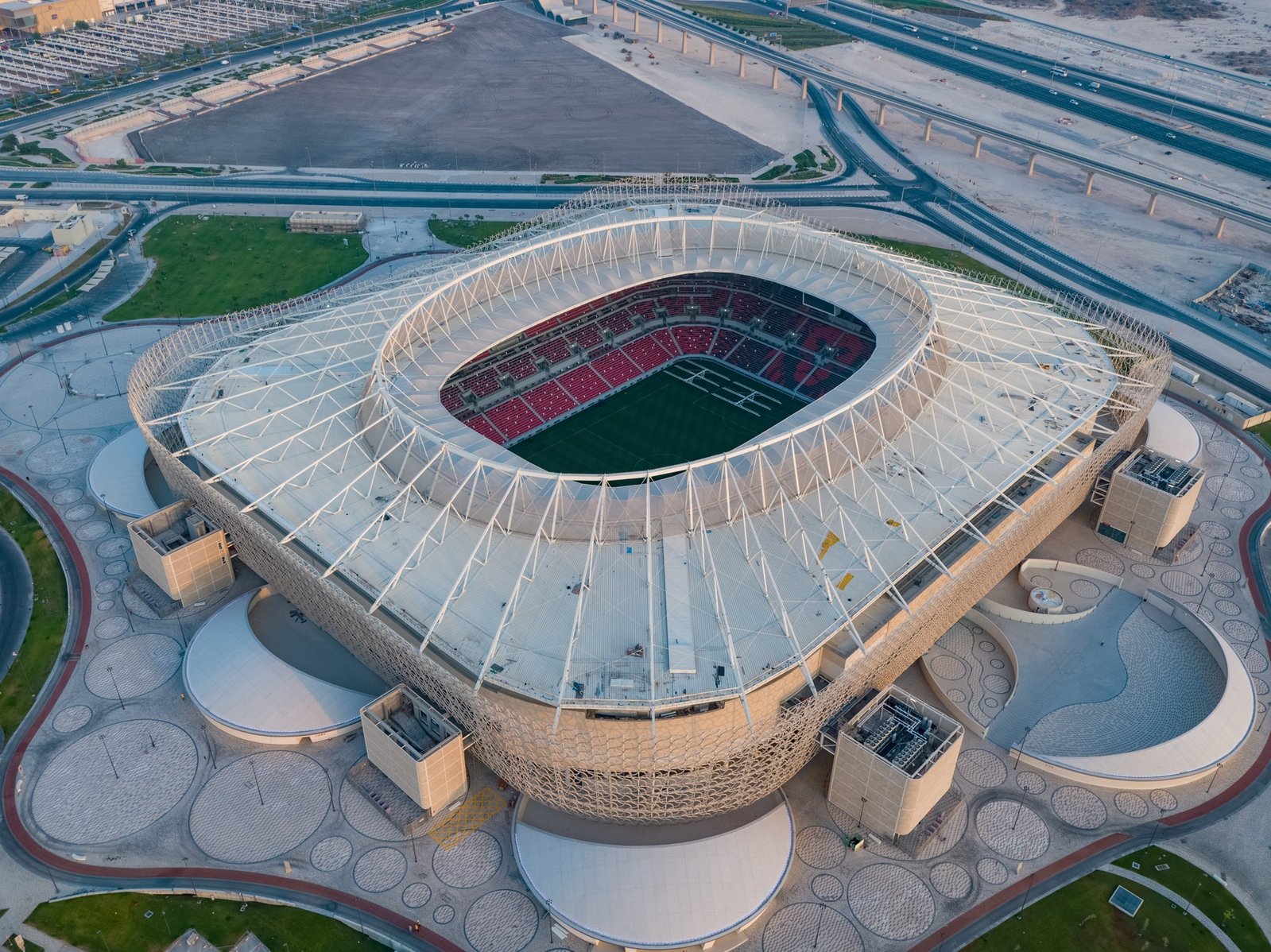 © Pattern Design / Supreme Committee for Delivery and Legacy
© Pattern Design / Supreme Committee for Delivery and Legacy
Permanent capacity of the venue is to be 21,000, and the temporary capacity for the 2022 World Cup will be 40,740 seats, manufactured jointly in Qatar and Poland. The colour scheme and lion symbols behind both goals relate to the Al-Rayyan SC identity. After the tournament, the modular upper tier of the facility will be dismantled and the seats will be handed over to other sports venues in Qatar and abroad. The temporary upper sections and roof consumed as much as 9,000 tons of structural steel, prefabricated and imported from China.
The concept combines a simple, compact body with a sophisticated façade in the form of a light mesh and roof, based around a distinctive steel ring, the area of which is 32 700 square metres. Thanks to that, the building gains dynamics in visual reception, and at the same time has a relatively uniform, almost rectangular structure. Interestingly, initial roof design suggested four traditional trusses anchored in each corner, a solution that was later scrapped entirely.
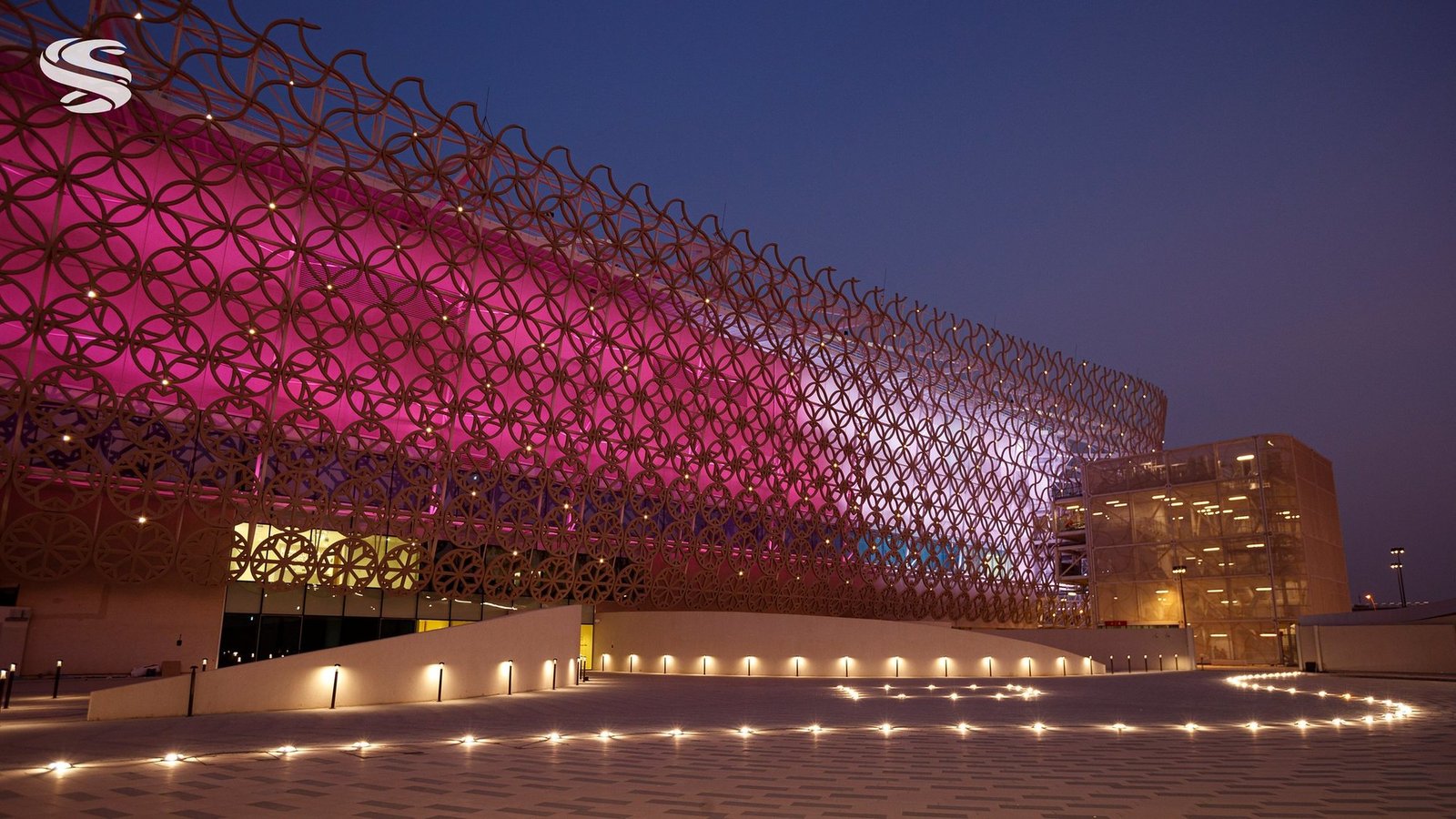 © Supreme Committee for Delivery and Legacy
© Supreme Committee for Delivery and Legacy
VIP zones will be located at the top of the lower tier. Hospitality and service zones will be partly situated outside the stadium in dunes-like structures. Dunes are the original inspiration for the stadium, slightly undercut by practical issues. The stadium had to include external towers for upper tier crowd circulation, but that - inadvertently - became an association with the original Ahmad bin Ali Stadium.
The most characteristic element of the stadium is the illuminated facade with an area of 39,000 square metres, which consists of multimedia screens covered by a translucent metal screen. The appearance of the facade refers to the values of Qatar, as well as elements typical for the landscape of this country. The pattern is thicker around the base and becomes more ephemeral at the top.
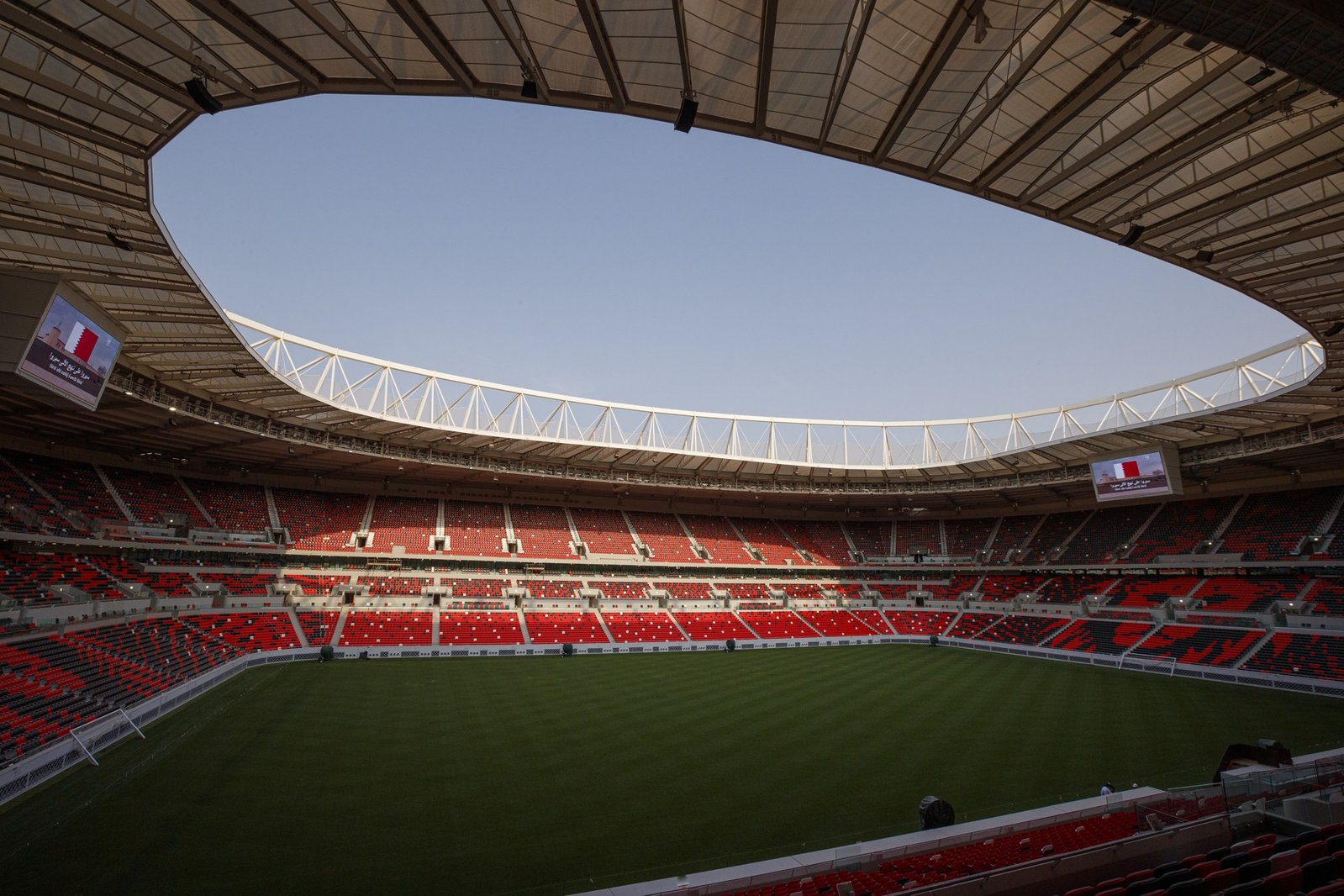 © Pattern Design / Supreme Committee for Delivery and Legacy
© Pattern Design / Supreme Committee for Delivery and Legacy
The themes that appeared on the metal screen include: family values, the beauty of the desert, native flora and fauna, local and international trade. All these motifs are linked by the last element, the shield. It symbolizes strength and unity. These patterns will not shut off sunlight to the backyard area of the stadium. The sun will power the solar panels located on the roof, which will help in the daily maintenance of the facility.
The venue uses environmentally friendly cooling (DC) technology via a central station with a cooling capacity of 16,000 tonnes. The station supplies chilled water to the stadium through the power station and from there to the large number of air treatment units deployed on the site to provide the required temperature for the stand and pitch area. At the same time, the building is 20% more energy-efficient compared to other ones of this type, and it also uses 20% less water.
After the World Cup, the area around the stadium will be used as a regional sports and recreation centre. It is planned to make available to local residents, among others, six football fields, cricket field and horse riding track.
Author: Tomasz Sobura
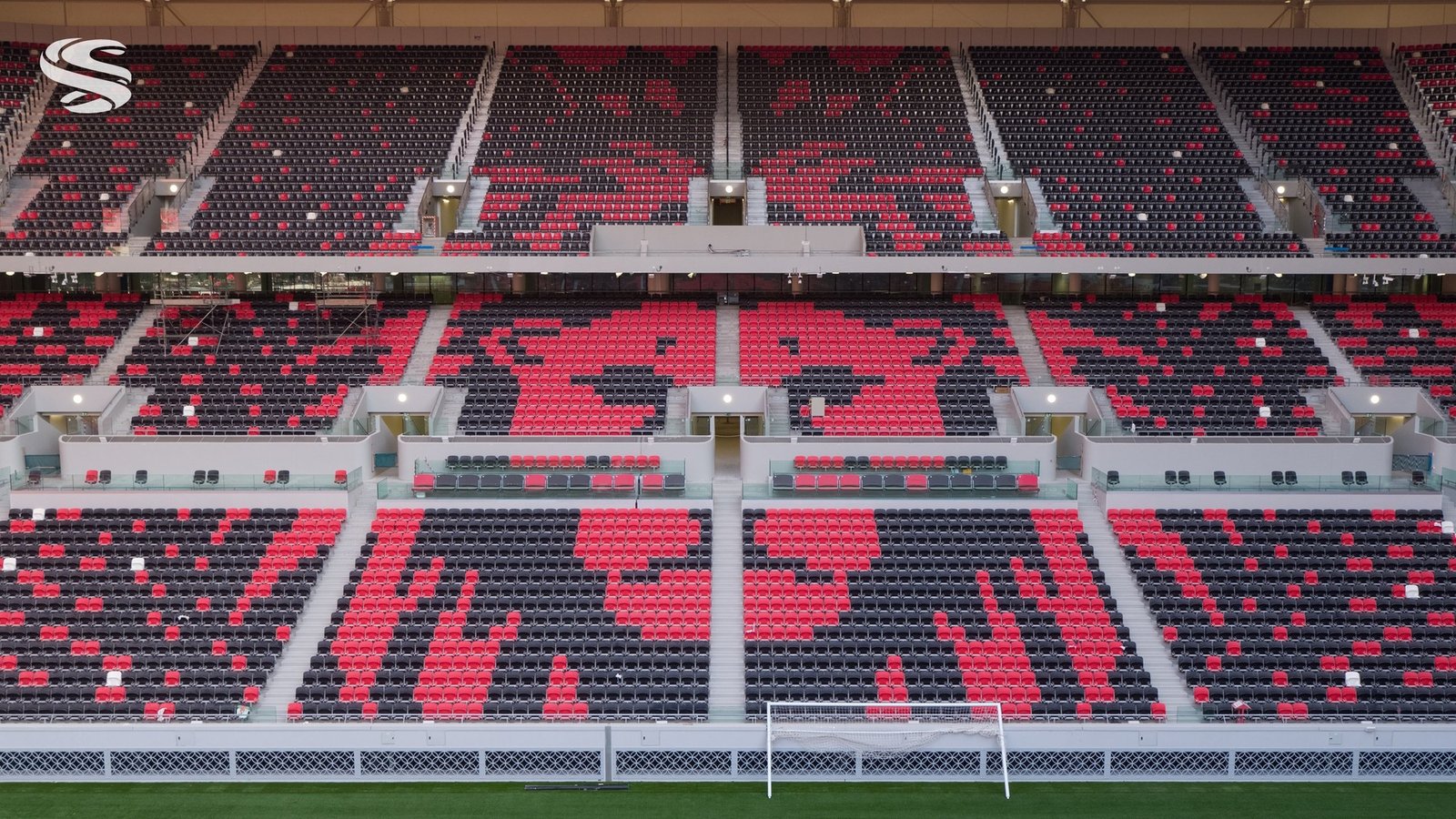 © Supreme Committee for Delivery and Legacy
© Supreme Committee for Delivery and Legacy
Advertisement

 StadiumDB
StadiumDB